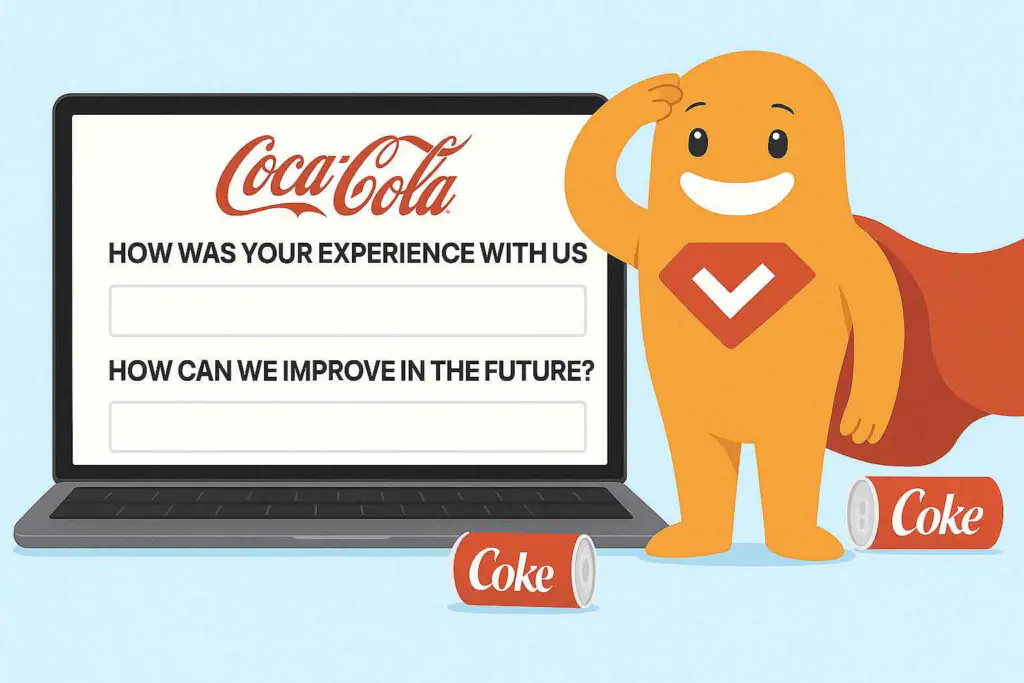Do your employees feel valued? Are your employees being challenged? Is an employee looking to jump ship? These are all great employee engagement survey questions to ask (and we’ll provide a lot more in a bit).
Of course, getting employees to respond to an employee engagement survey is sometimes easier said than done. In this blog, we’ll look at how to increase employee survey participation and much more.
Create your engaging survey, form, or poll now!
Why You Should Conduct an Employee Engagement Survey
Employee engagement surveys are one of the simplest ways to regularly solicit feedback from your team. Conducting these surveys also lets employees know that they have a voice, which makes them 4.6 times more likely to give their best performance, according to Gallup and Salesforce. That’s not all:
- Highly engaged teams show more than 20% greater profitability.
- Highly engaged teams reduce absenteeism by 41% turnover by 59%.
- 89% of HR leaders believe regular peer feedback is key to successful outcomes.
As you can see, there are many benefits to conducting employee engagement surveys! However, organizations that don’t take surveys or act on feedback score only 27% on the employee engagement index. So, it’s important to not just collect feedback, but act on feedback.
Average Response Rates for an Employee Engagement Survey
What is a good response rate for an employee survey? It’s difficult to nail down an average employee engagement survey response rate. After all, it can depend on many factors, such as:
- Extreme job satisfaction or job dissatisfaction (in either scenario, these people probably want to be heard the most).
- Promises of confidentiality or anonymity (employees are more likely to participate if they aren’t identified).
- Results of previous surveys (were concerns addressed or acted upon? If not, employees will be less inclined to participate again).
- Incentivization (will there be some sort of reward for participation?)
- Size of the company/number of employees
Let’s look closer at that last one, as some benchmarks have been determined for that.
|
Number of Employees |
Ideal Participation Rate |
|
Less than 50 |
80-90% |
|
500+ |
70-80% |
| 1000+ |
65-80% |
Whether you’re achieving an ideal participation rate or not, you always want to do better. We’re here to help!
10 Ways to Improve Employee Engagement Survey Response Rates
Wondering how to increase employee survey participation? While there’s no surefire way, we’ve identified ten methods that will likely give your results a boost!
1. Announce the Survey
Sometimes, a workplace survey just pops up in employees’ inboxes. Without any official announcement from the bosses, they may feel it’s not a priority, it’s optional, or it could just get lost in their crowded mailbox. So, always formally announce a survey prior to sending it, explain its importance, and what it aims to accomplish (determining employee satisfaction, uncovering challenges in the workplace, etc).
2. Send/Provide Reminders
Your employees are (hopefully) busy. A staff survey may not be their top priority. Often, they may set it aside but forget to come back to it. So, be sure to send a reminder email or two or mention it at team meetings to encourage participation.
3. Demonstrate Past Survey Success
Only 20% of employees feel that their managers take action on survey results, lowering their motivation to take a survey. So, when announcing the survey, make sure to discuss how important participation is. If you’ve conducted previous employee engagement surveys and they inspired company change, highlight this to reassure people that their voice matters.
4. Make It a Microsurvey
Keeping your survey short and sweet is often one of the best ways to gain participation. Known as a microsurvey, these are brief questionnaires meant to take five minutes or less. If you can cull questions enough that participants can wrap things up quickly (perhaps using multiple-choice questions or a Likert scale to make questions easier to answer) this is a good option.
5. Use Responsive Survey Designs
Not all employees are going to respond to a workplace survey while at a desktop computer; some will engage on their tablet or phone. If a survey is not responsive, it will not adjust to these smaller screens, providing a bad user experience that employees will drop out of. So, be sure that survey uses responsive design to fit any screen regardless of device.
6. Make Surveys Confidential or Anonymous
People are more likely to participate in an anonymous survey when they don’t have to identify themselves. Of course, the disadvantage is that leadership is unable to follow up with respondents since they don’t know who they are. In that case, you could opt for confidential surveys, in which a third-party service conducts the survey. This keeps the respondent’s identity unknown to their employer but allows the employer to follow-up with the employee through the third-party service.
7. Offer Team Incentives
Incentives are a great way to encourage response, but they should benefit groups, not individuals. So, create a modest incentive to teams or workgroups who achieve a high response rate, say over 90%. Employee survey incentive ideas may be a pizza party, a happy hour event, or even something silly, such as their boss having to dress up as a character chosen by employees (determining who he or she should dress as could lead to some fun employee survey questions!).
Group incentives also provide camaraderie and get employees to remind one another to take the survey. Talk about a win-win!
8. Designate a Survey Time
Not all employees are at a computer ready to take a survey. For example, in a factory setting. So, designate a specific time to take the survey to increase participation. Carve out time, say 15-30 minutes, for employees to take the survey instead of leaving it up to them to find spare time. Be sure all managers are in agreement and that employees are kept on the clock when they do it.
9. Hold Managers Accountable
If you’re a larger company with multiple managers overseeing teams, hold them accountable for getting their subordinates to participate. Survey software with a dashboard can let them see results in real-time as surveys roll in. If they’re not meeting the response goal, it’s up to them to remind or incentivize employees.
10. Follow Up with Employees
Just as you should announce the survey by highlighting how previous surveys have benefited employees and/or the company, you should also follow up after a survey has concluded to highlight key findings and discuss how management plans to address any issues that were uncovered. This will make employees know they were heard and more likely to participate in the future.
20 Great Employee Survey Questions to Ask
Employee satisfaction survey questions will certainly vary by company, but here are 20 employee engagement survey questions to get you started!
- On a 1-10 scale, how happy are you at work?
- How likely are you to refer someone to work here?
- On a 1-10 scale, how would you rate your work/life balance?
- If you were to quit, what would your reason be?
- Are you satisfied with company benefits/perks?
- Do you feel valued at work?
- How often does your manager recognize your work?
- Do you feel you are fairly compensated?
- If you could do it again, would you reapply here?
- Do you feel you will reach your full potential here?
- Do you see yourself working here in one year?
- What three words would you use to describe our culture?
- Do you feel like coworkers respect one another?
- Do you feel like leadership respects employees?
- Are you given the tools and resources you need to perform your job?
- Do you have fun at work?
- Do you feel aligned with company goals and values?
- Would you like to take on new roles or responsibilities?
- Are you proud to work here?
- If you could change one thing about your job/the workplace, what would it be?
Conclusion
An engaged employee is a happier employee, and happier employees lead to a more productive workplace! However, without conducting an employee engagement survey, you may never understand what challenges and opportunities exist for both employees and the company.
If you’re ready to find out how your employees view your company and their place within it, send employee engagement surveys with SurveyLegend. Be sure to check out our beautifully designed, responsive Employee Engagement Survey Template, our Manager Performance Survey Template, and our Employee Exit Survey Template. You’ll love the real-time data analytics you receive, and our security features. Get started today!
Do you regularly send out employee engagement surveys? Have any great survey questions we forgot on our list? Let us know in the comments!
Create your engaging survey, form, or poll now!
Frequently Asked Questions (FAQs)
Employee engagement surveys are a method of soliciting feedback from employees, often sent via email.
This can vary by a number of factors, such as whether it is anonymous or if there is an inventive. Company size also plays a big role (the more employees, generally the lower the participation rate).
A great way to encourage survey participation is to demonstrate how previous surveys initiated positive change.
A question appearing on most employee questionnaires is “On a 1-10 scale, how happy are you at work/with your job?”




